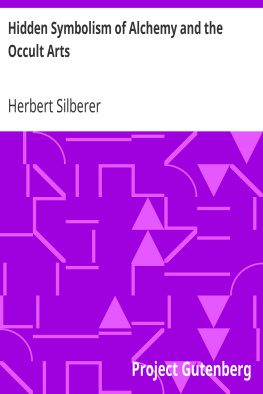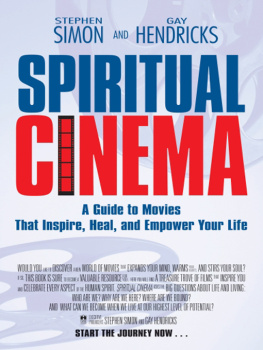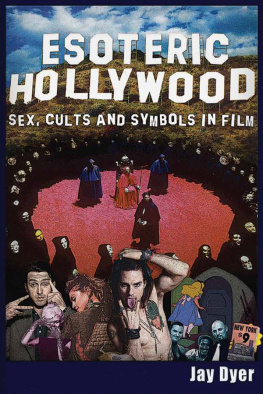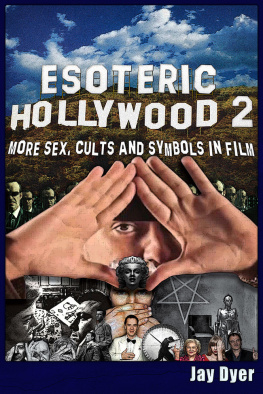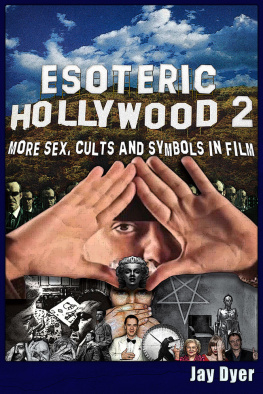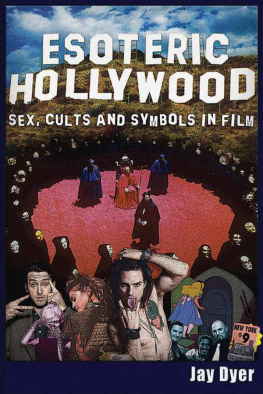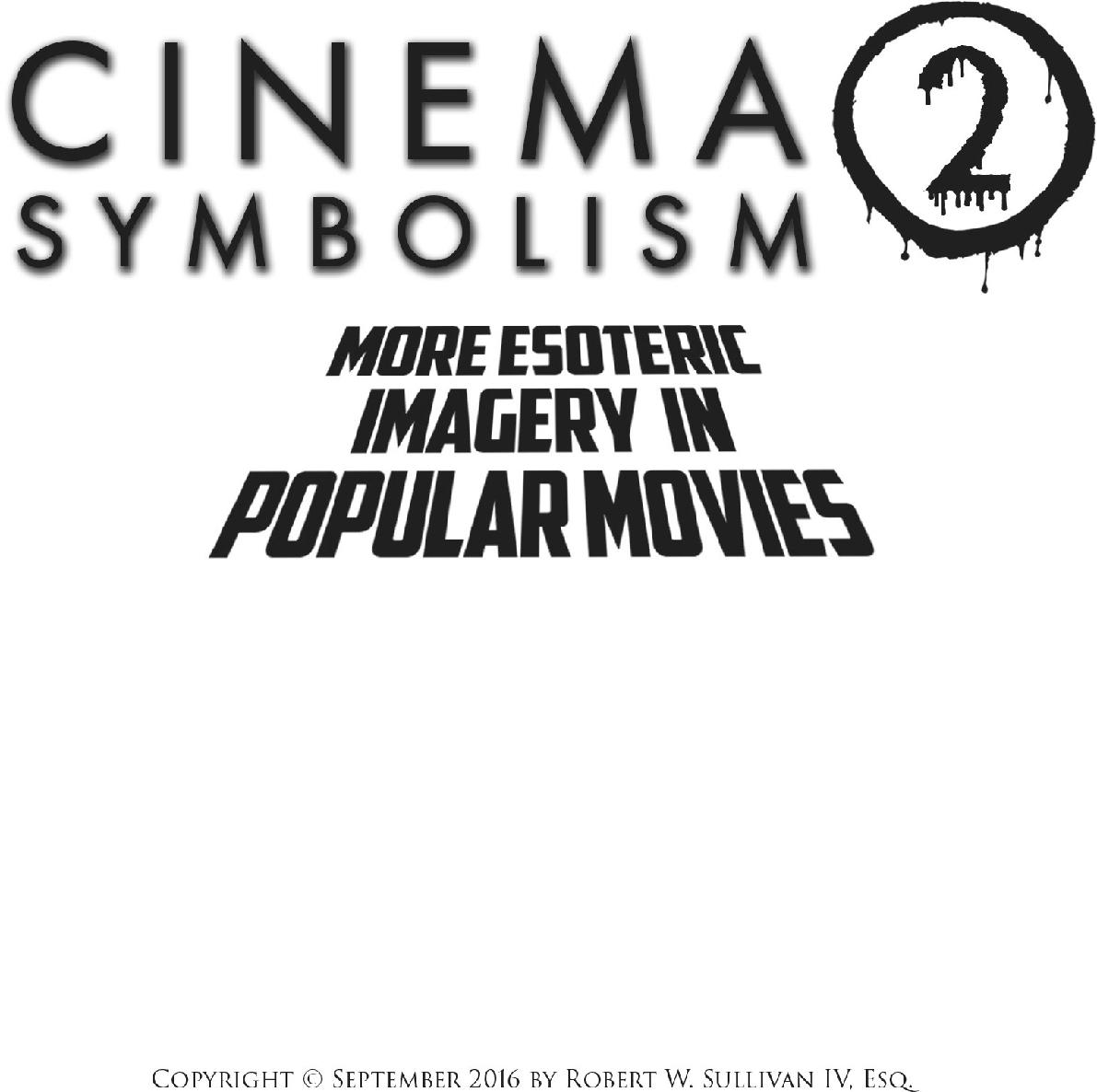CINEMA SYMBOLISM 2:
MORE ESOTERIC IMAGERY IN POPULAR MOVIES
by
Robert W. Sullivan IV, Esq.
September 2016, by Robert W. Sullivan IV
Copyright Office, Library of Congress
All rights reserved.
Print ISBN: 978-0-692-84735-0
ISBN 978-0-692-89590-0 (e-book)
Front Cover: (top left) Ralph Fiennes as Lord Voldemort in Harry Potter and the Deathly Hallows Part 2; (top right) Natalie Portman as Nina Sayers in Black Swan; (bottom left) Maleficent in Sleeping Beauty ; (bottom right) Jack Nicholson as Jack Torrance in The Shining ; and (center) Hugo Weaving as V in V for Vendetta .
Editor: Wendy Tucker
Graphic Design: Deadwood Publishing, LLC.
Published by D EADWOOD P UBLISHING , LLC., Baltimore, Maryland, 2017.
Legal Disclaimer: All images (including cover and back cover) which appear in Cinema Symbolism 2:
More Esoteric Imagery in Popular Movies are either 1) in the public domain; 2) permitted by the Fair Use Doctrine (text is educational research); 3) and the Nominative Use Doctrine for any trademarks-logos. The author does not maintain ownership over any of the images which appear in this book except the About the Author image.
Once again, this book is dedicated to movie fans everywhere.
CONTENTS
LIST OF ILLUSTRATIONS
Preface
.
Introduction
Chapter I
Chapter II
Chapter III
Chapter IV
Chapter V
Chapter VI
Chapter VII
Chapter VIII
Chapter IX
Chapter XI
Chapter XII
Chapter XIII
Conclusion
About the Author
.
PREFACE
No reason. I just like doing things like that.
- Luther, The Warriors , 1979.
How about I dance the Black Swan for you?
- Lily, Black Swan , 2010.
I know, I know, but it does make a fine jest,
the kind of jest that would amuse Satan.
- Prince Prospero, The Masque of the Red Death , 1964.
We played the Cobb Energy
Performing Arts Centre you bitch.
- Aubrey Posen, Pitch Perfect , 2012.
Enough! Enough! You better start talking asshole!
Because we got shit we need to talk about.
Were already freaked out. We need you acting freaky
like we need a fucking bag on our hip.
- Mr. White, Reservoir Dogs , 1992.
Good and evil, there never is one without the other.
- Merlin the Magician, Excalibur , 1981.
You never had a rope around your neck,
well Im going to tell you something.
When that rope starts to pull tight,
you can feel the Devil bite your ass.
- Tuco Benedicto Pacfico Juan Mara Ramirez (a/k/a the Ugly),
- The Good, the Bad and the Ugly , 1966.
Of course I intended on changing my jacket this evening
before the fish and goose soire. - Jack Torrance,
The Shining , 1980.
He used to say, sometimes you need to do something bad to stop you from doing something worse.
- India Stoker, Stoker , 2013.
A re esoteric and occult symbols, icons, themes and undercurrents intentionally placed in films or do they manifest by happenstance? To this author the answer is yes; like mysterious Masonic rituals, arcane symbols and themes are deployed in movies to both conceal and reveal; they are a cinematic Sphinx whose riddles require deciphering. Otherwise, it would all be a coincidence, and there is no such thing as a coincidence. Hollywood eccentric, psychic, and showman the Amazing Criswell (1907-1982) adroitly echoed this sentiment when he wrote, No one, but no one is superstitious; for coincidence is the language of fools.
These occult-cinematic doctrines were first analyzed by this author in Cinema Symbolism: A Guide to Esoteric Imagery in Popular Movies (2014, First Edition). For instance, it is beyond dispute that Joseph Campbells (1904-1987) grandiose mythological monomyth, comparatively analyzed in his book The Hero with a Thousand Faces (1949), heavily influenced writer, producer, and director George Lucas. Numerous elements of the monomyth, or the heros journey , appear in Lucas Star Wars saga. To this author, its clear the Back to the Future Trilogys main characters reflect the heroes and villains of Egyptian Osirian Cycle while incorporating other numerological-solar icons as well. There is no doubt that the sublime dogmas and philosophies presented in the Wachowski Siblings Matrix films, much like Ridley Scotts Blade Runner (1982), are Gnostic and occult.
Gnosticism, in general, is a belief system that holds that the spirit was positive, and matter or materialism was an illusion. According to the Gnostics, the material world is governed by a lesser god: a botched Jehovah known as the Demiurge; while spiritual salvation qua gnosis lay in the attainment of esoteric knowledge identified with the sacred feminine, Sophia , or wisdom. Sophia (, Greek for wisdom) is critical to Hellenistic philosophy and religion, Platonism, Gnosticism, Orthodox Christianity, and occult Christianity. The Gnostics venerate Sophia, a wisdom goddess, as do some Neopagan, New Age, and feminist-inspired Goddess spirituality groups. In Gnostic tradition, Sophia is a feminine figure, analogous to the human soul but also simultaneously one of the feminine aspects of God. Sophia, Wisdom itself, beautiful as the moon, great as the sun, terrible as marshaled rank of armies, pure because nothing of defilement can touch her, honorable because the image of goodness itself, powerful because being one she can do all things, kind because she visits the nations that are sacred to her and makes men friends to God and prophets.
The pursuit of divine, arcane gnosis led to the Monad: the unfathomable Godhead of the spiritual realm. Gnostic films work on two levels: they awaken viewers to the possibility that they have been dwelling in a dream; they offer paths out of this dream into a realm where no one sleeps. of his alter ego the Narrator, or Jack (Edward Norton), leads a full-blown Gnostic rebellion against the Demiurge by initiating Project Mayhem: the destruction of modern society and its obsession with materialism, status, and wealth. By annihilating the corporeal, hylic world, Durden is simultaneously ravaging the false illusion and all its banalities which the Demiurge holds sacred. Old materialism is torn down symbolized by imploding buildings during Fight Clubs final moments making way for an enlightened, spiritual vision to stand their place.
Fight Clubs Gnosticism dwells in the movie They Live (1988) wherein Demiurge-like extraterrestrials secretly rule planet Earth by using all forms of media and advertising to create an illusion. The aliens employ subliminal-hypnotic OBEY, CONFORM, MARRY AND REPRODUCE, SLEEP, CONSUME, and to have NO INDEPENDENT THOUGHT mind control advertisements to keep humankind in perpetual stasisdrowning man and womans divine sparkwhile hiding in plain site. Much like Tyler Durden, an unemployed drifter, Nada (Spanish for nothing), played by Rowdy Roddy Piper (1954-2015) initiates a rebellion against the aliens, many of whom are in wealthy positions of power, exposing them and their totalitarian, materialistic subterfuge to the world. Being nothing, Nada is anti-wealth and anti-materialism and thus anti-Demiurgus; by revealing the humanoid extraterrestrials Nada will supply gnosis and awaken humanity to the illusion placed before it, anticipating Neo (Keanu Reeves) in The Matrix (1999), thereby outmaneuvering the mind controlling skull-faced creatures. The Demiurges shadow is cast upon Joh Fredersen (Alfred Abel, 1879-1938) in 1927s Metropolis . Fredersen is a wealthy, ruthless tyrant who oversees a vast urban dystopia, Metropolis, wherein there is a significant separation between the spiritual, philosophical lower class and the decadent, wealthy upper class; Fredersen sees workers as machine-like slaves who labor endlessly to maintain the luxury and technology (cf. materialism) of his city.


